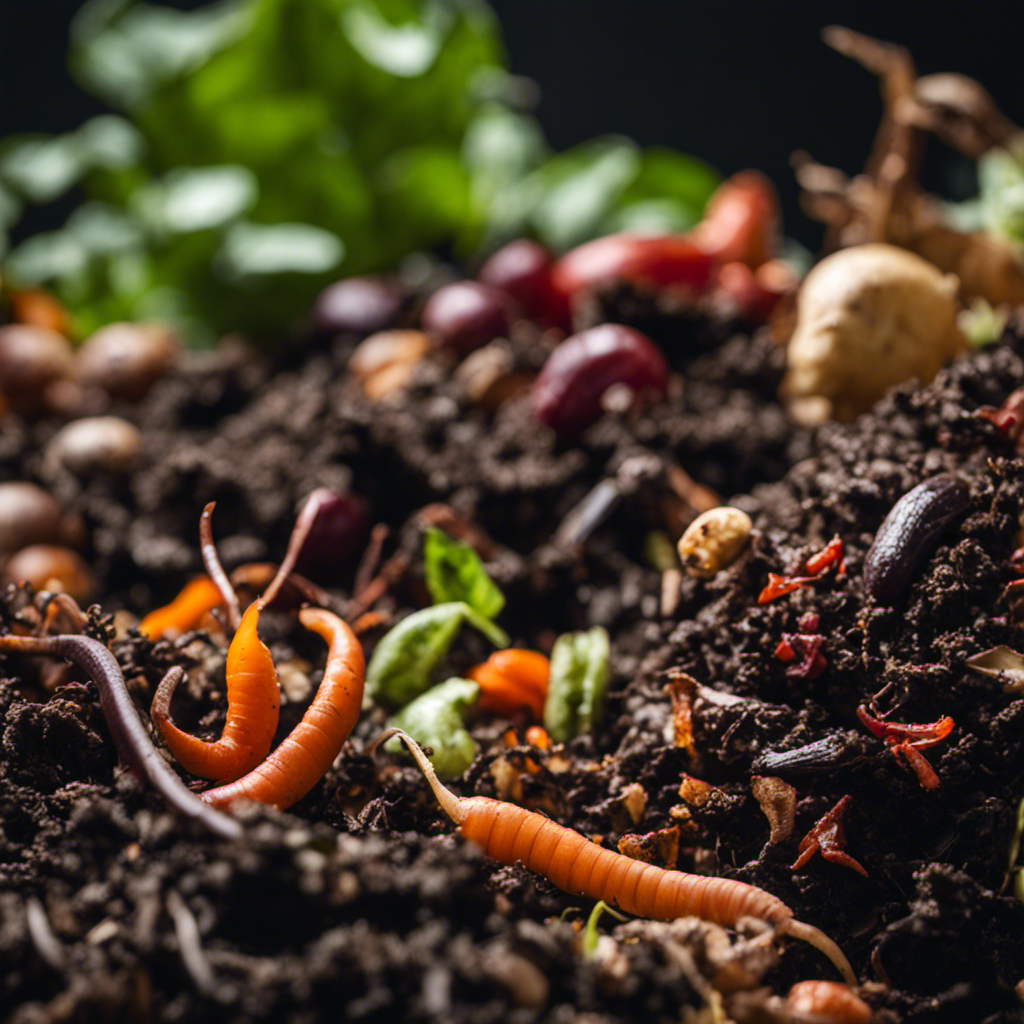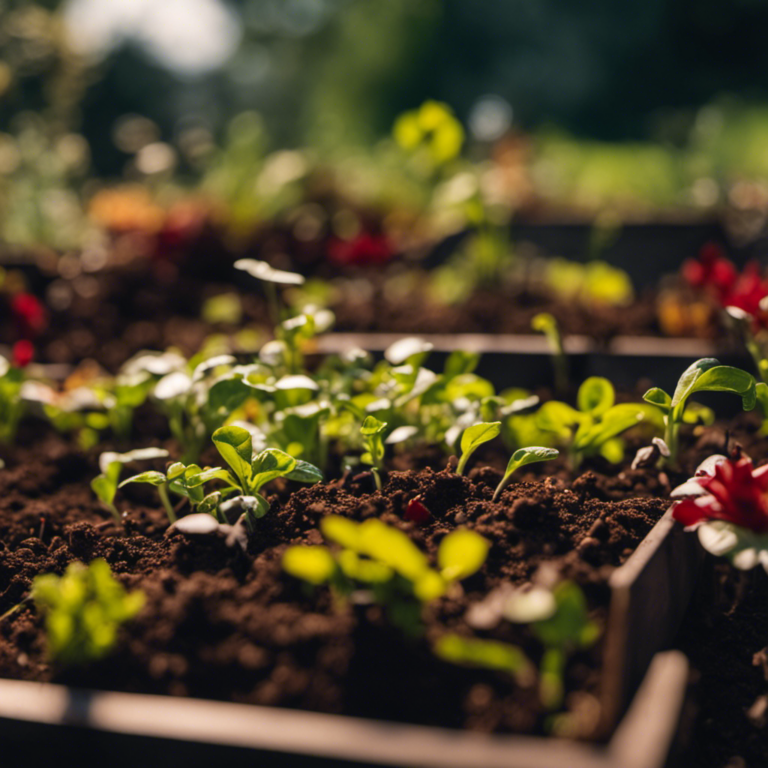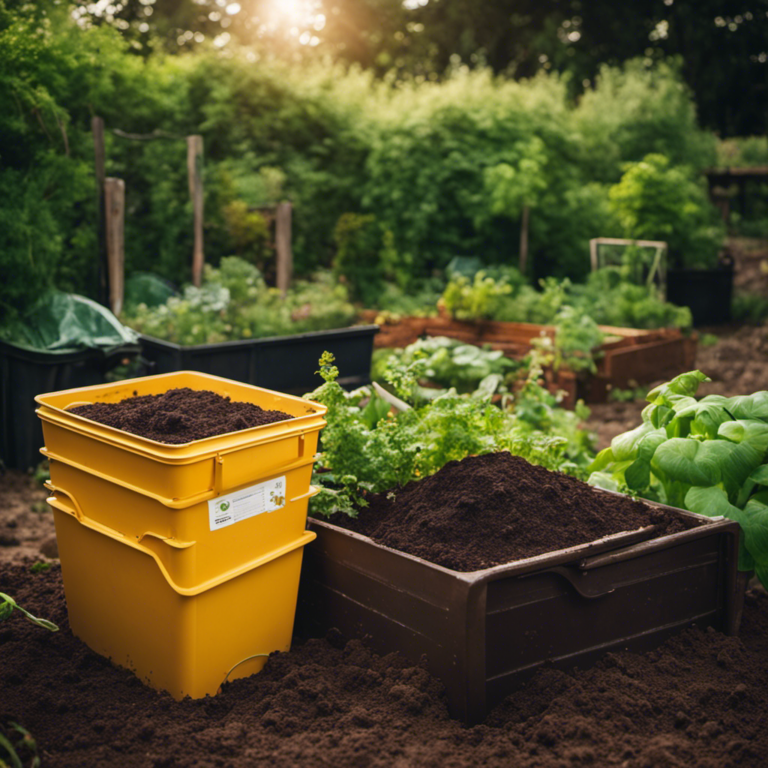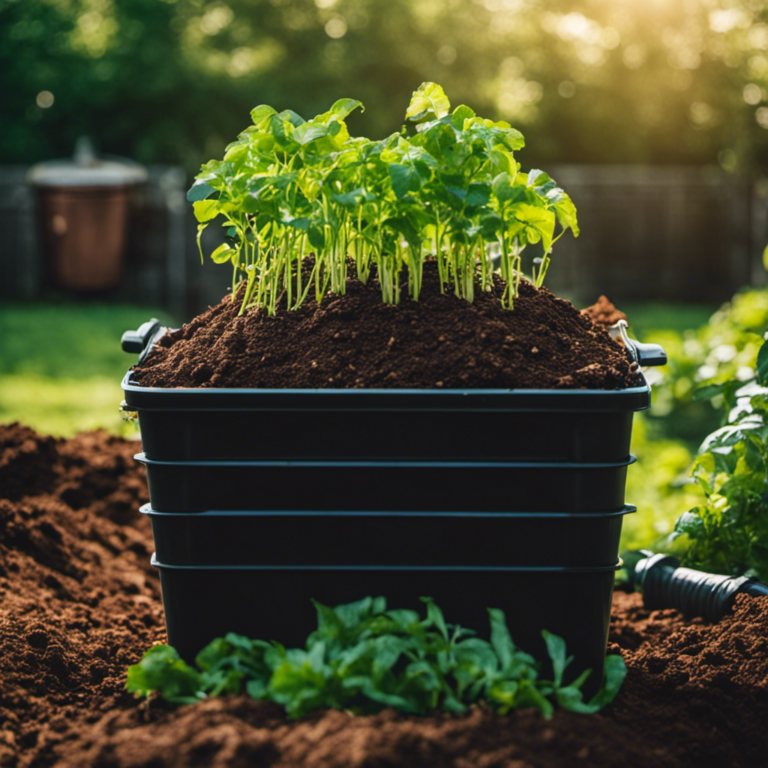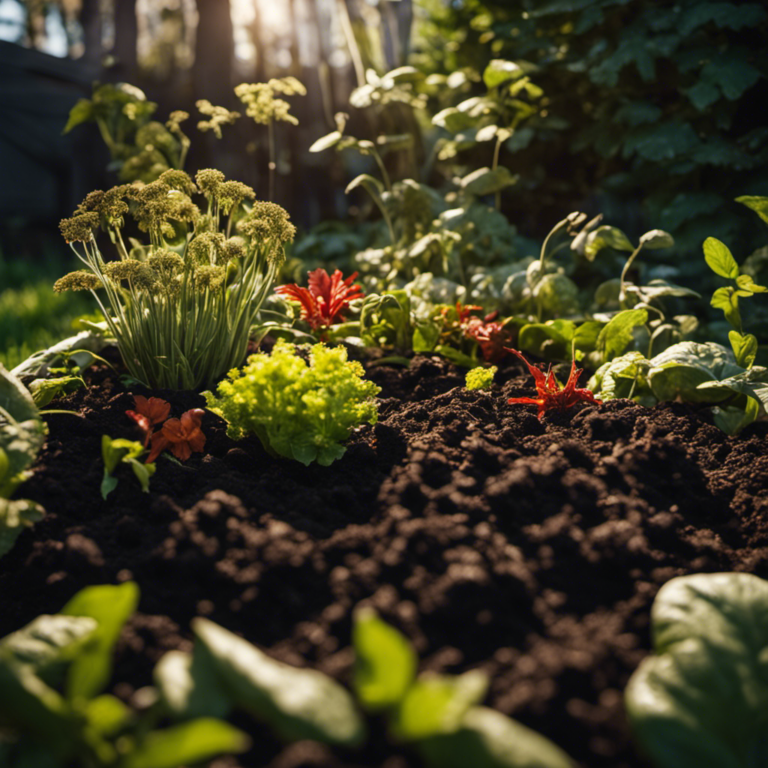Attention all vegetable enthusiasts!
I have some exciting news for you. Composting systems are making great strides towards embracing organic principles. Prepare to tap into the power of nature and transform your kitchen scraps into nourishing soil.
In this article, we will delve into the latest composting techniques, including:
- Vermicomposting
- Bokashi composting
- Hot composting
- Aerated static pile composting
So, get ready to enhance your gardening practices with these incredible organic composting methods.
Key Takeaways
Composting systems have evolved to embrace organic methods that harness the power of nature to efficiently break down organic waste. Traditional techniques have been improved with innovative approaches such as vermicomposting, which uses worms to decompose organic matter.
Another method, bokashi composting, involves fermenting waste. Additionally, hot composting speeds up the decomposition process, while aerated static pile composting maximizes airflow.
By adopting these methods, we can reduce waste and create nutrient-rich compost that supports a healthier and more sustainable environment.
Traditional Composting Methods
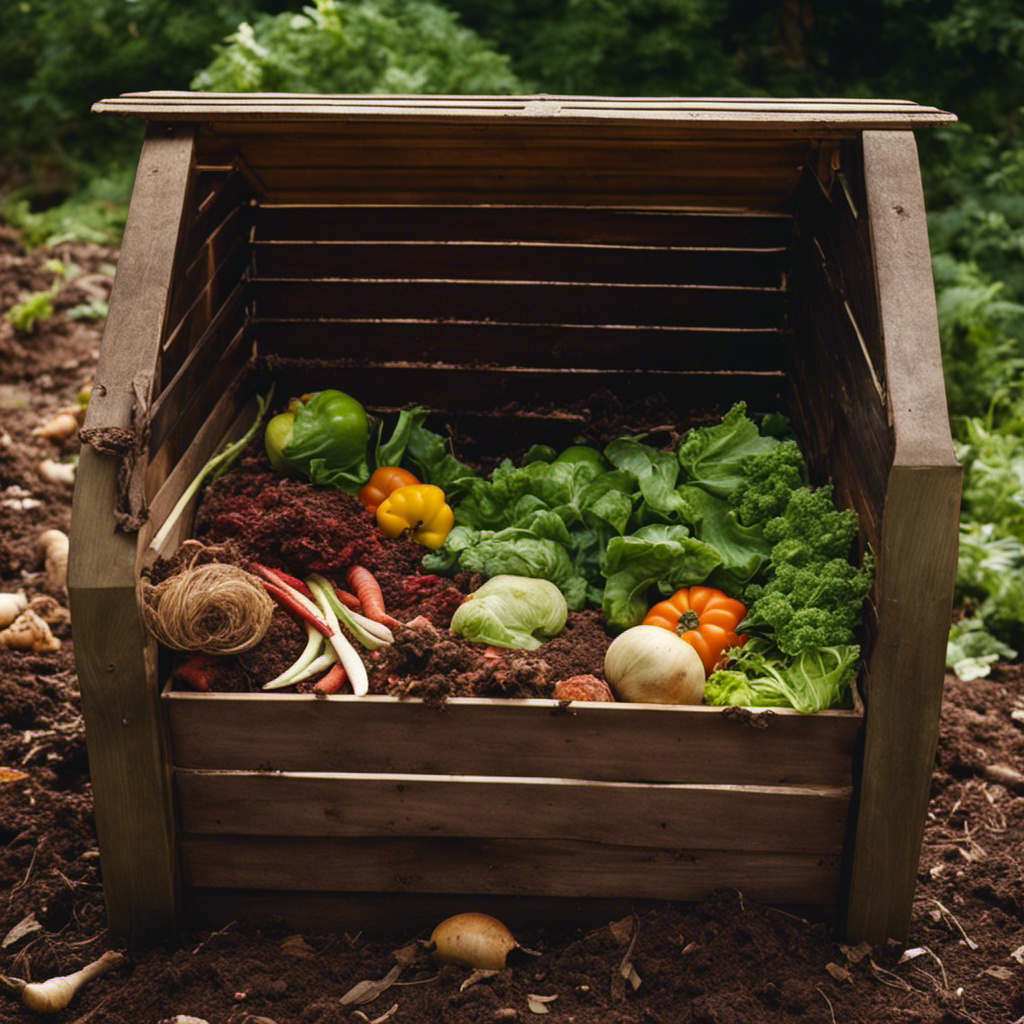
I prefer using traditional composting methods because they’re simple, effective, and sustainable. These techniques have been used for centuries and continue to provide numerous benefits.
One of the primary advantages of traditional composting is its simplicity. All you need is a designated area in your yard or garden where you can pile up organic waste such as fruit and vegetable scraps, grass clippings, and leaves. Over time, these materials will naturally break down and transform into nutrient-rich compost that can be used to fertilize your plants.
In addition to being simple, traditional composting methods are also highly effective. The decomposition process that occurs in a compost pile generates heat, which helps eliminate harmful pathogens and weed seeds. This ensures that the resulting compost is safe to use in your garden without the risk of introducing pests or diseases.
Furthermore, traditional composting is a sustainable practice that helps reduce waste and promote a healthier environment. By diverting organic waste from landfills and transforming it into compost, we can decrease greenhouse gas emissions and minimize the reliance on chemical fertilizers. This not only benefits our gardens but also contributes to the overall health of our planet.
Vermicomposting: Utilizing Worms for Organic Waste
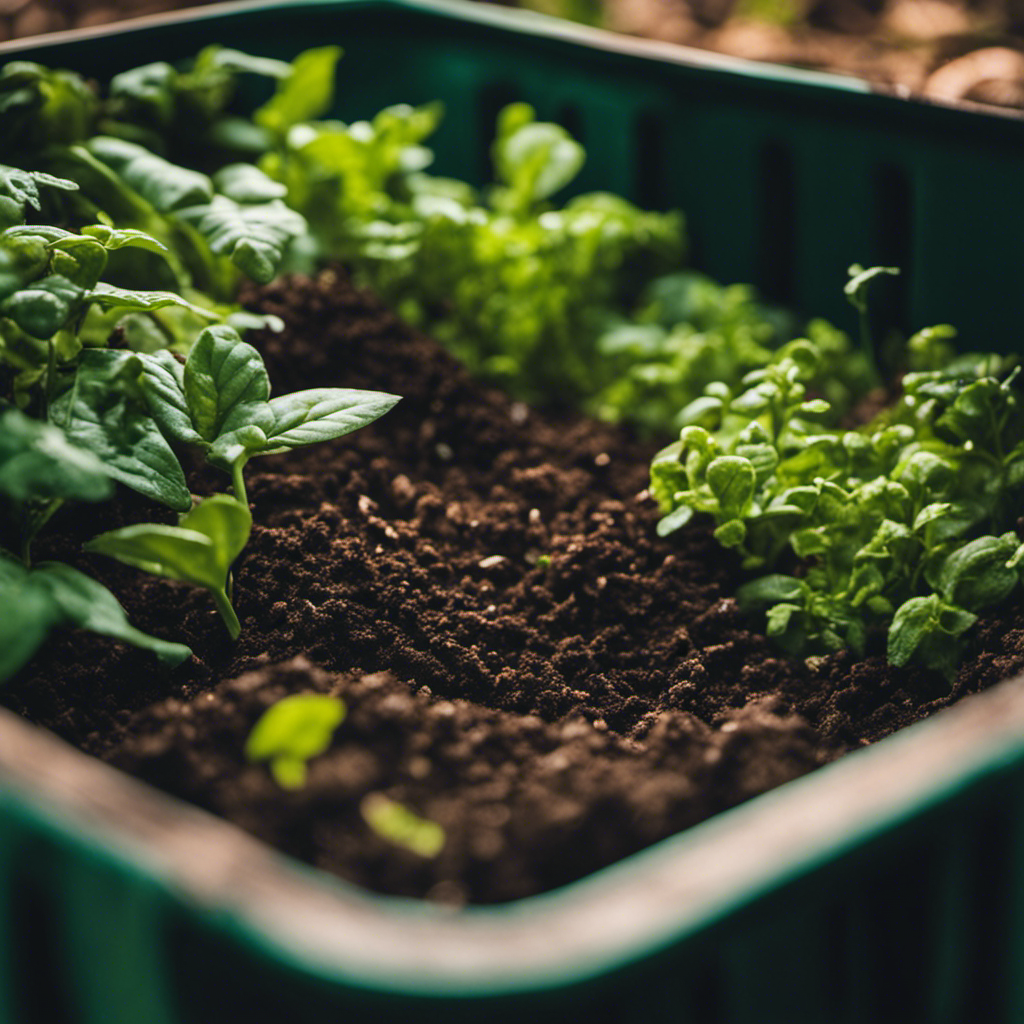
Vermicomposting: Using Worms for Organic Waste
Let’s explore the world of vermicomposting, which involves utilizing worms to break down organic waste. Vermicomposting, also known as worm farming, is a composting method that uses worms to transform organic materials into nutrient-rich soil. This process not only reduces waste but also creates a valuable resource for gardening and agriculture.
Worms play a crucial role in vermicomposting by consuming organic waste like food scraps and plant materials. They produce nutrient-rich castings, also called worm castings or vermicast, which greatly enhance soil fertility and provide essential nutrients for plants.
Here is a table summarizing the benefits of vermicomposting:
| Benefits of Vermicomposting |
|---|
| 1. Waste reduction |
| 2. Production of nutrient-rich soil |
| 3. Improved soil fertility |
| 4. Sustainability and eco-friendliness |
Bokashi Composting: Fermenting Organic Matter
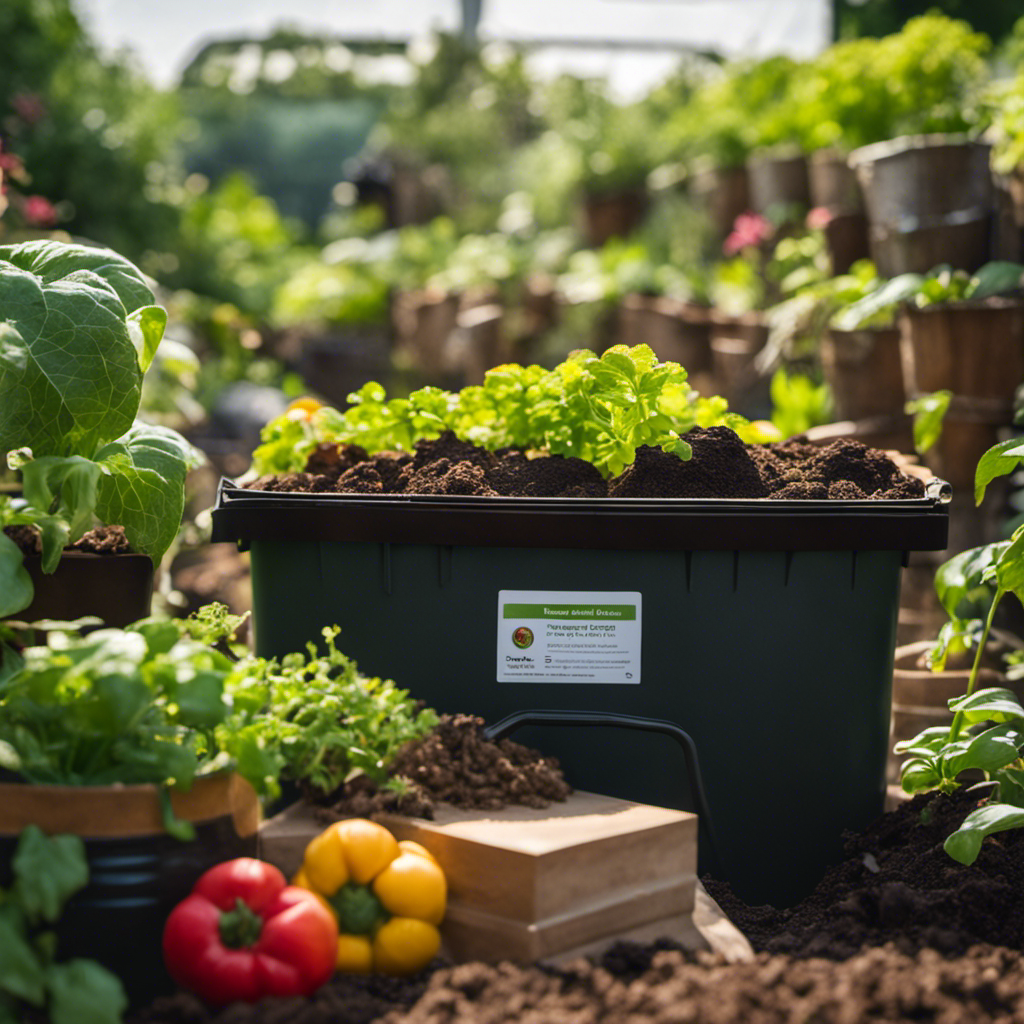
Bokashi Composting: Fermenting Organic Matter
Continuing from the use of worms for organic waste, another composting method that promotes the breakdown of organic matter is bokashi composting. This method involves fermenting organic waste and offers several benefits for those who want to reduce their environmental impact and create nutrient-rich soil for their gardens.
One of the main advantages of bokashi composting is its ability to handle a wider range of organic materials compared to other composting methods. This includes meat, dairy, and other items that may not be suitable for traditional composting. The fermentation process breaks down these materials more rapidly, making it an excellent option for households that generate a significant amount of food waste.
To start bokashi composting at home, you’ll need a special bokashi composting bin or bucket, which you can easily purchase online or at gardening stores. Begin by layering your organic waste with a handful of bokashi bran, a mixture of microbes that kickstart the fermentation process. Press down on the waste to remove any air pockets and seal the bin tightly.
Once your bin is full, let it ferment for about two weeks. During this time, the waste will transform into a nutrient-rich, pre-compost material. You can then bury the fermented waste in your garden or mix it with your regular compost pile to speed up decomposition. Remember to keep the bokashi bin tightly sealed to prevent odors and pests.
Bokashi composting is a convenient and efficient way to convert organic waste into valuable compost. By following these simple steps, you can start bokashi composting at home and contribute to a more sustainable future.
Hot Composting: Speeding up the Decomposition Process
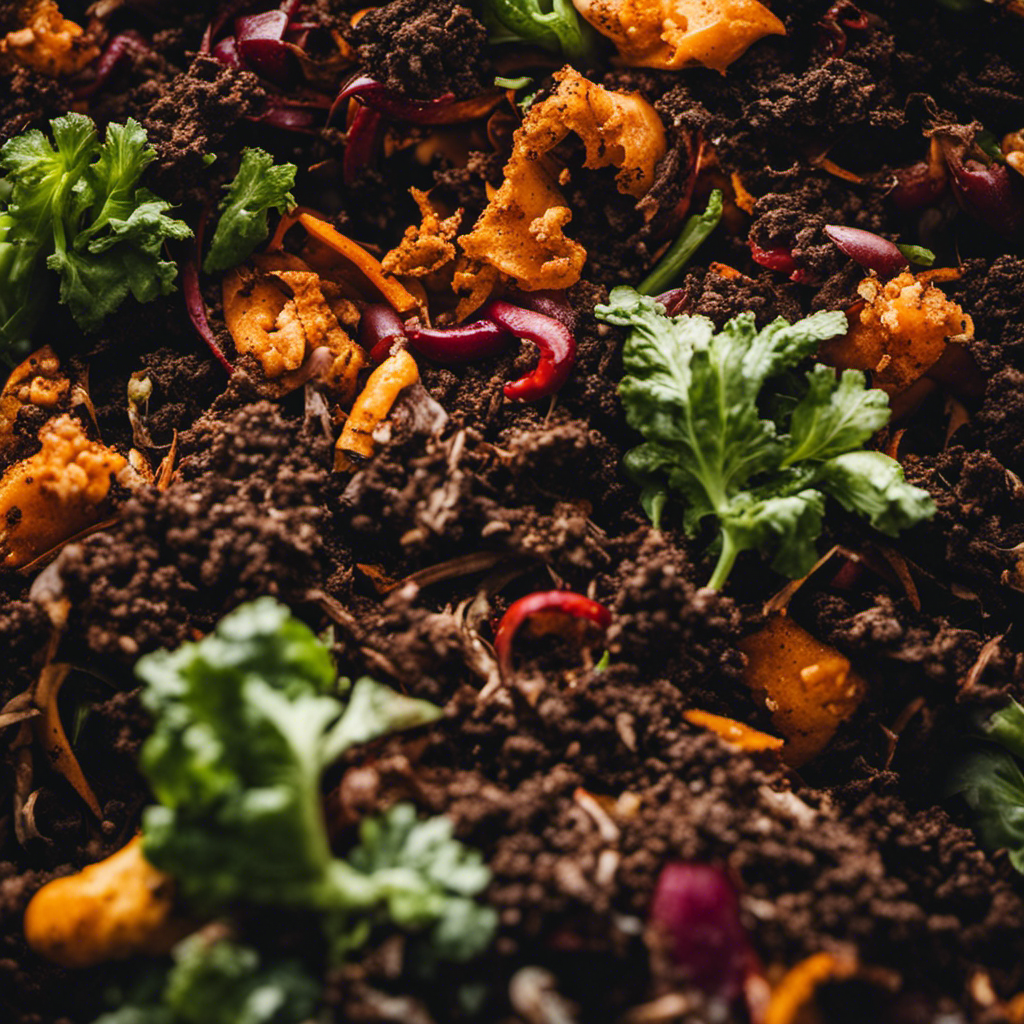
Hot Composting: Speeding up the Decomposition Process
Hot composting allows you to accelerate the decomposition process by harnessing the power of heat. By maintaining the right temperature, you can speed up the breakdown of organic waste and transform it into nutrient-rich compost in less time. Temperature control is crucial in hot composting as it creates an optimal environment for microorganisms to thrive and efficiently break down organic matter.
To better understand the temperature requirements for hot composting, let’s refer to the table below:
| Temperature Range | Result |
|---|---|
| 40-60°C | Rapid decomposition of organic matter |
| Below 40°C | Slow decomposition |
| Above 60°C | May kill beneficial microorganisms |
By keeping the temperature within the range of 40-60°C, you can ensure that the decomposition process is accelerated. Achieving this temperature range involves regularly mixing the compost pile to distribute heat evenly and adding materials that generate heat, such as fresh green waste or manure.
Hot composting not only speeds up the process but also helps eliminate weed seeds and pathogens that may be present in the organic waste. It is an efficient and effective method of composting, allowing you to quickly convert kitchen scraps and garden waste into valuable compost for your plants.
Aerated Static Pile Composting: Maximizing Airflow for Efficient Decomposition

Now, let’s discuss how aerated static pile composting maximizes airflow for efficient decomposition.
Maximizing aeration is a crucial aspect of this composting method as it promotes aerobic decomposition. In aerated static pile composting, a large compost pile is created using organic waste materials like vegetable scraps, yard trimmings, and coffee grounds. The pile is then left to decompose over time, with regular turning to introduce oxygen and enhance airflow.
By maximizing aeration, aerated static pile composting creates an optimal environment for decomposition. Oxygen is essential for the growth of aerobic bacteria, which break down organic matter more efficiently compared to anaerobic bacteria. These aerobic bacteria require oxygen to thrive and convert the organic waste into nutrient-rich compost. The increased airflow in aerated static pile composting ensures a ready supply of oxygen, accelerating the decomposition process.
The benefits of aerobic decomposition in aerated static pile composting are significant. It leads to quicker breakdown of organic matter, resulting in faster compost production. This allows for more efficient resource utilization and reduces the composting time. Additionally, aerobic decomposition produces compost with higher nutrient content, making it valuable for gardening and agriculture.
Conclusion
Composting systems have evolved to embrace organic methods that harness the power of nature to efficiently break down organic waste. Traditional techniques have been enhanced with innovative approaches such as vermicomposting, which utilizes worms to decompose organic matter.
Another method, bokashi composting, involves fermenting waste. Additionally, hot composting speeds up the decomposition process, while aerated static pile composting maximizes airflow.
By adopting these methods, we can reduce waste and create nutrient-rich compost that supports a healthier and more sustainable environment.
